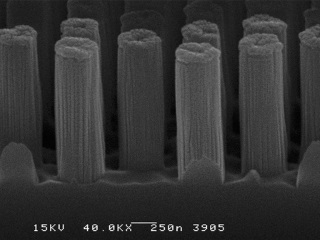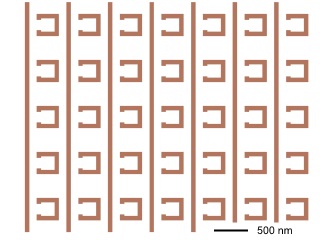

Structurally disordered materials
On the theoretical side, liquids are prototypal disordered materials and high-viscosity liquids were the first amorphous materials described by computational methods. The industrial success of InGaZnO in TFT production leads to new approach in disordered materials investigations.
Disordered solids extends beyond glasses and comprise all situation where lack of translational invariance is an essential aspect of performance. One can therefore consider polycrystalline materials with boundaries and polycrystalline materials with random orientation of one or two axis, without boundary. More classical methods consider also out of equilibrium, doped, materials.
Ga 3d In 5s Zn 3d path in IGZO
Nanopatterned materials
Nanopattern labels structure size below 100nm. Self-assembly of micelles or monolayers, lamellar arrangements have been sketched and used for a long time. Soft nanospheres dispersed in a rigid matrix have also be used in ABS. Those nanotructures were discovered well after their use.
In recent years, building nanostructures on purpose has been a new target and a new challenge. The success of microelectronics, with today design at the 10 nm scale allowed the development of tools to produce, test and design those structures, mixing classical and quantum physics.

nanopattern etched in fused silica glass by Rolith Inc.
Metamaterials
The interaction between electromagnetic waves or sound waves and homogeneous materials are well described by material constants which in the simplest case are {epsilon, mu} {E,G}.
However if the material has a periodic structure with caracteristic dimensions in the subwavelength range, effective material constants can have values unreachable with homogeneous materials. Proof of principles started with negative refraction index materials and cloaking devices. Practical realizations require exact periodicity and it is necessary to test the design robustness to noise in periodicity.
The first practical applications are in antenna and filters (including electromagnetic band-pass window).

split ring resonators in bandstop electromagnetic wave filter
